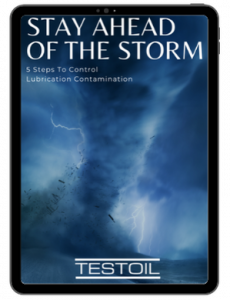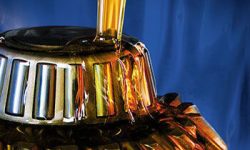Don't Risk Lubrication Contamination
Contaminated lubricants account for nearly half of all lubricant related failures. Lubricants become contaminated with either solid or liquid contaminants. Solid contaminants act as abrasives causing severe damage to internal components. Solids also clog filters and orifices restricting oil flow and resulting in lubricant starvation. Liquid contaminants such as water will alter the load handling ability of oil, and act as a catalyst to lubricant degradation. Many liquid contaminants also cause internal corrosion and rust. Proper filtration must be maintained, and sources of potential contamination should be identified and controlled to ensure the cleanest lubricant possible.
In order to effectively control contamination, consider these points:
- Identify: Analyze The Oil - Identifying and monitoring contamination via oil analysis is paramount for process critical machinery. A quality analysis program will help reveal the type of contamination and guide you in the direction as it relates to its removal and prevention.
- Removal: Take Action - Simply identifying contamination and monitoring its levels is not enough. Contamination control cannot be accomplished without taking action. Simply assessing its presence is not enough.
- Prevent: Clean Up Your Act - Many plants go to great lengths to monitor the condition of their equipment, but do nothing to address the root cause of their problems. Unfortunately, real improvements in contamination control are often ignored because execution is too difficult and expensive. There are a few simple and cost‐effective things you can do that can make a huge improvement.
A quality proactive maintenance program will help guide you in the direction as it relates to contaminant control. A focus on education is a step in the right direction. Everyone on your team must be educated about the benefits of preventing contamination. An educated, dedicated team will ensure you create an efficient, cost-saving contamination control program.
Want to read more about Contamination Control? Click Here






